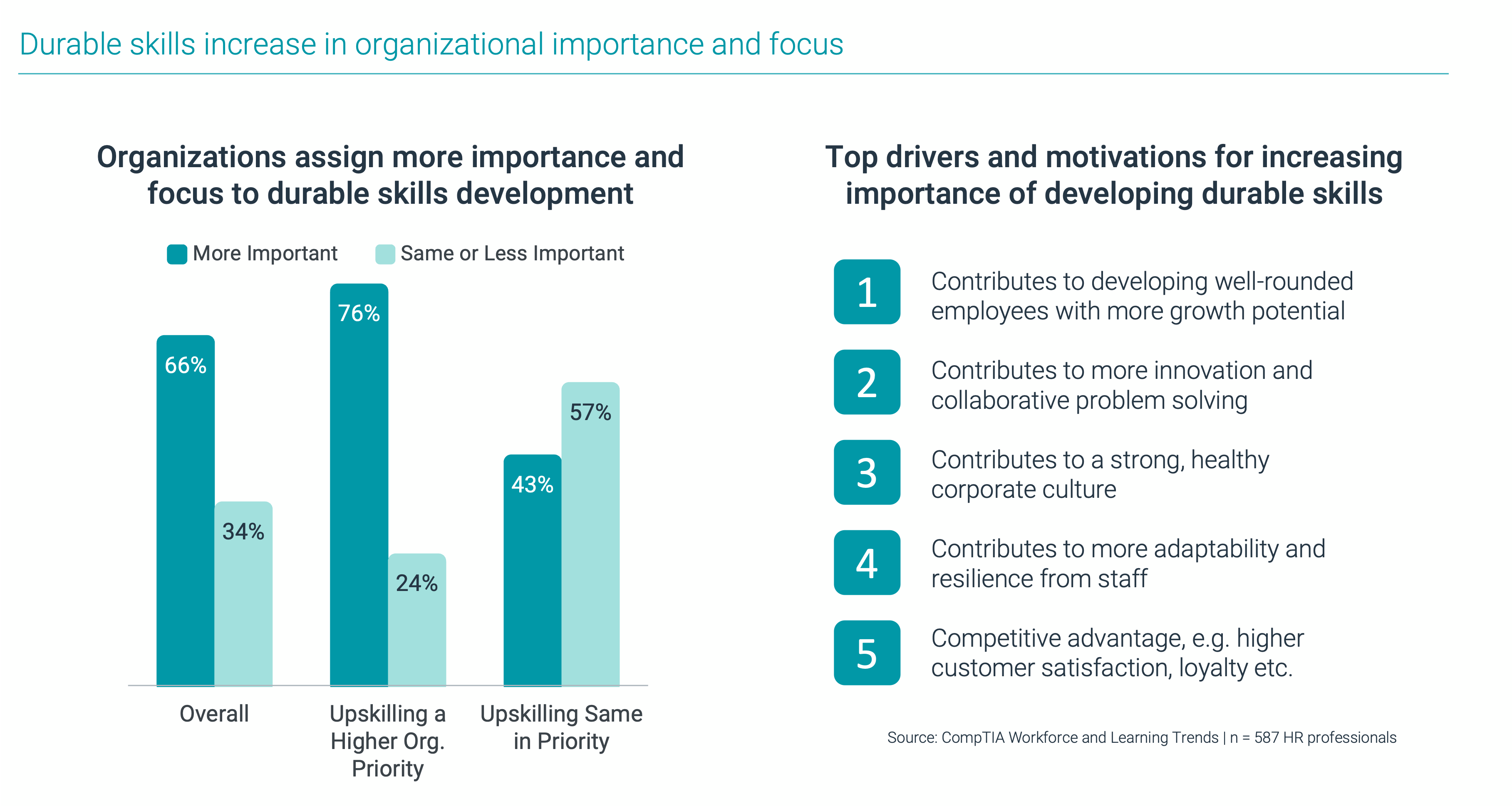Talent Pipeline Shortcomings Highlight the Need for Human Infrastructure Investment
Employers and the L&D community tend to struggle with the nuances of soft skills development. Defining, assessing, prioritizing and aligning soft skills to job-specific outcomes presents obvious and not-so-obvious challenges. Even the term is a misnomer given the underlying technical components of communications, project management or critical thinking.
Durable skills is one concept that conveys the importance of skills holding value throughout a career, whatever changes in technology, industry or business models might come along. America Succeeds, a nonprofit that organizes collaborations between education and industry, is leading the Durable Skills Initiative in conjunction with supporting partners such as CompTIA and SHRM. The initiative defines durable skills as a “combination of how you use what you know — skills like critical thinking, communication, collaboration and creativity — as well as character skills like fortitude, growth mindset and leadership.”
America Succeeds analyzed 82 million U.S. job postings and found that 7 of the top 10 skills requested were durable skills. The demand for durable skills spanned educational attainment level, industry sector, and geography. Notably, 59% of job postings in the IT sector listed three or more durable skills, suggesting they are at least as important as mastery of specific technologies.
This analysis brings some rigor and definition to what non-technical skills employers actually need, but developing durable skills remains a challenge, as the accompanying charts illustrate.

That would be a welcome trend, according to Stephanie Morgan, Senior Director of Industry Education at CompTIA. “The old mode of training and coaching focused on so-called high potentials and high performers,” she says. “We can't limit talent development to management anymore. Even if you expect someone to stay an individual contributor in the same position, that position is going to change, so how do we keep that employee relevant? Providing an opportunity for that relevance is shifting back to the employer.”

Please visit the CompTIA research hub to access the full Workforce and Learning Trends report.